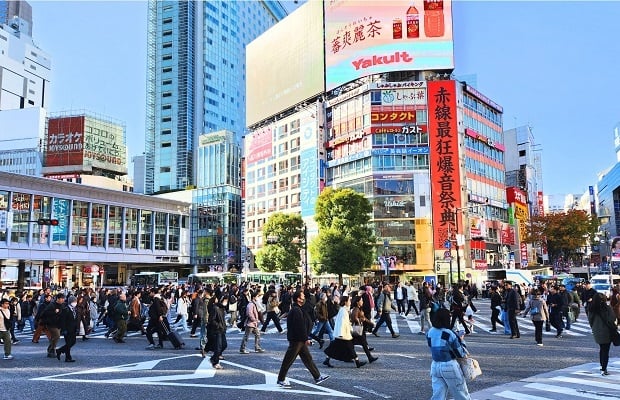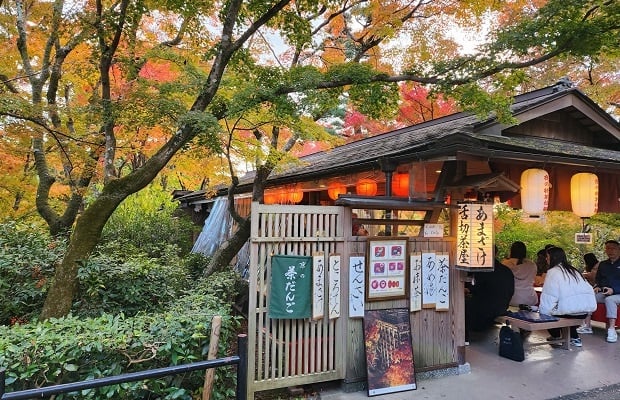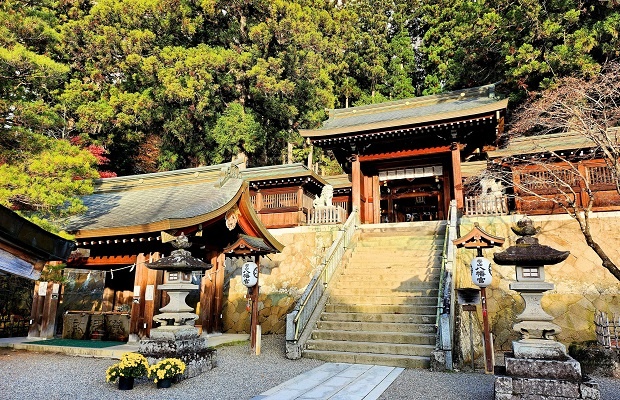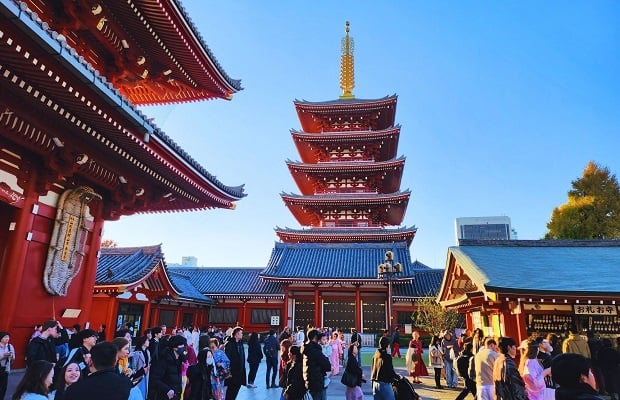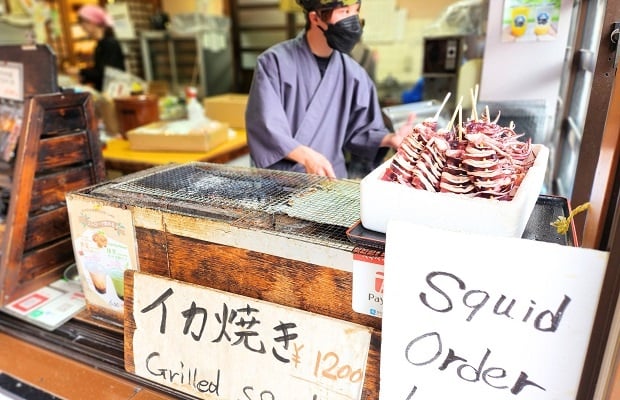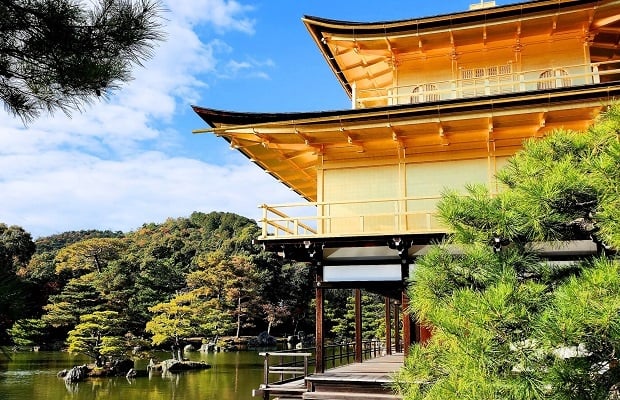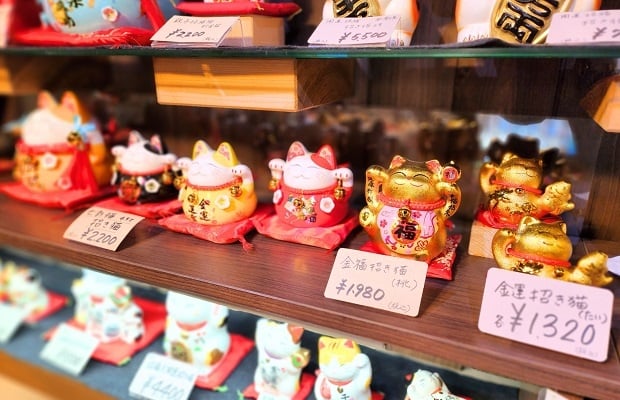Colours of Japan
- Tokyo, Kanazawa, Takayama, Kyoto and Osaka
- Hakone and Mount Fuji
- Learn how to make Japanese sushi and okonomiyaki
- Senso-ji and Kinkakuji Temples & Fushimi Inari Shrine
- Hiroshima and the Peace Park Museum
- Try your hand at calligraphy and Ikebana
- Travel by shinkansen bullet train
Overview
Japan is master of both modernity and history. It is a country that effortlessly embraces its futuristic ideals while holding fast to its captivating tradition.
Join us from 23 November 2025 to 03 December 2025 as we discover the colours and culture of Japan.
Our tour includes in-depth visits to Tokyo, Hakone, Kanazawa, Takayama, Kyoto, Hiroshima, and Osaka, and we will learn about a culture that is very different to our own. We will see iconic neon-lit streets and visit architectural wonders, reflect at ancient temples, taste exotic flavours, shop at the most famous markets, and marvel at the seemingly ever-present Mt. Fuji, as we journey from gigantic, cutting-edge cities to the fresh, clean air and slower pace of the ancient Japanese countryside. If we are lucky, we will be spoiled with spectacular autumn scenery along the way as thousands of trees turn vivid hues of red, orange, and yellow.
While certain visits are sure to be evocative, particularly Hiroshima, which holds a sad but important historical significance, other experiences will thrill and delight. You’ll love riding the high-speed bullet train, digging into Japanese favourites like sushi and okonomiyaki and trying your hand at Ikebana flower arranging or calligraphy. Enjoying a Japanese tea ceremony is sure to be a highlight.
Itinerary
DAY 0: JOHANNESBURG/ CAPE TOWN – TOKYO
Meet at the check-in counter for your international flight from Johannesburg or Cape Town to Tokyo, Japan.
DAY 1: TOKYO ARRIVAL
Welcome to Japan! Upon arrival at Narita International Airport, we will be welcomed and transferred by coach to our hotel in Tokyo, a fast-paced, neon-lit city that is as futuristic as it is historical.
Upon arrival at the hotel, check in and spend the rest of the evening at leisure.
O/N at Sunshine City Prince Hotel or Similar
DAY 2: TOKYO
Breakfast at the hotel.
We start our day experiencing the so-called “scramble” crossing of Shibuya Crossing. At one of the world’s busiest intersections, in front of the entrance to Tokyo’s Shibuya Station, ten lanes of traffic and five crossroads converge under the relentless flashing of neon signs. With each change of the lights, more than 1,000 people surge forward, gilding seamlessly past one another in a minute of co-ordinated chaos.
Later this morning we will enjoy a hands-on Sushi making experience and learn more about this delicious tradition.
After an early lunch we head to Tokyo’s Asakusa district with a visit to Senso-ji Temple (also known as Asakusa Temple). Record has it that the temple was founded in the 7th century AD, making it the oldest Buddhist temple in the capital, and the five-story pagoda, trails of incense and vast eaves will take you back to a Tokyo of time gone by. On entering through the Kaminarimon Gate, you’ll find that the temple is an impressive complex of halls and gardens. Many of the halls are relatively modern, having been rebuilt after heavy bombing during World War II. The bright stalls of mementoes and trinkets in Nakamise-dori may look like a modern addition, but vendors have been selling to pilgrims within the temple since the 18th century and most shops in this arcade have been run by the same families for several generations, serving souvenirs, top-class street food and irresistible snacks. Visible from within the temple grounds is Asakusa’s newest attraction, the soaring Tokyo Skytree, and our next stop. Rising 634 metres, this futuristic tower offers panoramic views of the city and on a clear day, all the way to Mt. Fuji. We will enjoy a bird’s eye view from the observation deck at a height of 350 metres, before returning to our hotel.
O/N at Sunshine City Prince Hotel or Similar (Breakfast, lunch, and dinner)
DAY 3: TOKYO - HAKONE
Breakfast at the hotel and check-out. Pack an overnight bag as our main luggage will be sent ahead to Kanazawa.
We leave the city behind and head west towards the Fuji-Hakone-Izu National Park — usually referred to as Hakone National Park — which encompasses several quaint towns and the snow-crowned Mt. Fuji, or Fujisan, as it is more commonly known in Japan.
Our first stop is Oshino Hakkai, the Eight Seas of Oshino. It is the site of eight crystal-clear ponds, located in the Fuji Five Lakes area, one of the most scenic spots from which to view the mountain, and part of the Mt. Fuji UNESCO World Cultural Heritage site. The eight ponds, some teeming with Koi, are fed by snowmelt from the slopes of Mt. Fuji that filters down the mountain through porous layers of volcanic rock. A series of bridges and pathways lead us around and over these tranquil ponds. The traditional thatched roof buildings, slow-spinning water wheels, framed by Mt. Fuji in the background, all combine to transport us into another era. The small village is especially pretty in the autumn months when maple trees, interspersed with evergreens, turn a gorgeous amber colour. A true feast for the eyes.
At 3,776 m, Mount Fuji is the tallest mountain in Japan and is known for its graceful conical form. It is sacred to the Japanese people and is one of Japan's three holy mountains. The peak has inspired Japanese art and literature from 9th-century poetry to the 19th-century prints of Hiroshige. We learn more about this important landmark at the Fujisan World Heritage Centre before ending our day at our hotel in Hakone.
O/N at Hakone Tenseien or Similar, Japanese Stay (Breakfast, lunch, and dinner)
DAY 4: HAKONE - KANAZAWA
Breakfast and check-out.
Surrounded by lush alpine forest, Hakone is spread along the shores of Lake Ashi. With the mountains as our constant back drop we enjoy a scenic boat cruise on Lake Ashi followed by a ropeway ride to Owakudani "Hell Valley" where we alight and take a walk through the bubbling sulphur vents and stop to try one of the famous black eggs, cooked in the heat of the natural thermal activity (conditions permitting).
After an exciting morning we are transferred to Odawara station for our shinkansen bullet train journey to Kanazawa, via Tokyo. With bullet train speeds reaching almost 320 km/h, there’s a real thrill in watching the scenery whip past as we head to this port city.
On arrival, we check into our hotel where our main luggage is already waiting.
O/N at Hotel Kanazawa or Similar (Breakfast and dinner)
DAY 5: KANAZAWA - TAKAYAMA - KANAZAWA
Enjoy breakfast at the hotel.
Today we take a step back in time and we travel to nearby Takayama, stopping at the historic villages of Shirakawa-go en route. Located in a river valley surrounded by the rugged high-mountain Chubu region of central Japan, the villages of Shirakawa-go and Gokayama was declared a UNESCO world heritage site in 1995. These isolated villages are famous for their traditional gassho-zukuri farmhouses, some of which are more than 250 years old. Gassho-zukuri means "constructed like hands in prayer", as the farmhouses' steep thatched roofs resemble the hands of Buddhist monks pressed together in prayer. The architectural style developed over many generations and is designed to withstand the large amounts of heavy snow that falls in the region during winter. The roofs, made without nails, provided a large attic space used for cultivating silkworms.
Once in Takayama, we explore the old town on foot. Beautifully preserved, many buildings and whole streets of houses date back to the Edo period (1603 – 1867) when the city thrived as a wealthy trade post, drawing expert artisans, farmers, and merchants. Simply strolling around the town, soaking up the historic architecture is a profound experience. A highlight of the day is a visit to Yatai Kaikan in the Sanmachi area. The museum and exhibition hall are devoted to the spectacular floats of the Takayama Festival, hosted each April and October, and regarded as being among the finest traditional festivals in Japan. The highlight of these festivals is the parade of hundred-year-old, expertly crafted floats, or yatai, being pushed through the narrow roads. The Yatai Kaikan exhibits four of these exquisite floats.
We return to Kanazawa for dinner and overnight.
O/N at Hotel Kanazawa or Similar (Breakfast and dinner)
DAY 6: KANAZAWA - KYOTO
Breakfast and check-out.
This morning, we explore Kanazawa. Our first stop is Kenrokuen Garden. In the Japanese art of horticulture, there are six attributes that make a garden perfect, and Kenrokuen has them all. Kenrokuen is a classic strolling garden and lauded as one of the Three Great Gardens of Japan. The spacious grounds used to be the outer garden of Kanazawa Castle and were constructed by the ruling Maeda family over a period of nearly two centuries. Opened to the public in 1871, Kenrokuen features a variety of flowering trees which provide the garden with a different look for each season.
Omicho Market has been Kanazawa’s largest fresh food market since the Edo Period, playing an essential part in the city’s food culture for over 300 years. It is made up of a lively, colourful network of covered streets lined by around 170 shops and stalls. The market is particularly renowned for its large number of fishmongers selling crab, yellow-tale, and shrimp from the Sea of Japan. It is a great place to find something to eat and people-watch.
A stroll in Higashi Chaya, one of the most picturesque parts of Kanazawa, will make you feel as though you are stepping back in time. The district’s Edo-era tea houses were once populated by geisha and samurai. Often called Kanazawa’s “Old Town,” the stately wooden townhouses and cobbled streets were designed for the pleasure of the merchant classes and the descendants of samurai. While it is no longer possible to meet a samurai, Kanazawa is one of the few places in Japan where geisha still work and if you are lucky you might catch a glimpse of one. It is one of only two geisha quarters nationally recognized for its cultural value. The district consists of a main street of the most famous tea houses in Kanazawa, a living example of Japan’s cultural past, surrounded by several neighbourhoods of craftsmen, artists, and cafes. The area also a variety of shops featuring products made from gold leaf, one of Kanazawa’s chief crafts. A local treat is gold leaf ice cream… be sure to try it.
After an interesting day of sightseeing, we transfer to our hotel in Kyoto.
O/N at Daiwa Roynet Hotel Kyoto or Similar (Breakfast)
DAY 7: KYOTO
Enjoy breakfast at the hotel. We meet our guide and vehicle. Today we will enjoy a sightseeing tour of Kyoto. For many this is the quintessential Japan.
Having been the capital of Imperial Japan for over 1,000 years, Kyoto has built up an impressive collection of Buddhist temples and Shinto shrines, mercifully spared from the bombing of World War II that razed other Japanese cities.
Kinkakuji (also known as Rokuonji) is an impressive Zen temple of which the top two floors are completely covered in gold leaf. One of Kyoto's most famous attractions, this temple was originally built in 1397 as a residence for shogun Ashikaga Yoshimitsu and is now a UNESCO World Heritage Site. Kiyomizudera (literally meaning "Pure Water Temple") is one of the most celebrated temples of Japan. Also on the UNESCO World Heritage list, it was founded in 780 on the site of the Otowa Waterfall in the wooded hills east of Kyoto and derives its name from the waterfall's pure waters. It is best known for its wooden stage that juts out from its main hall, 13 meters above the hillside offering commanding views of Kyoto as well as the numerous cherry and maple trees below that erupt in a sea of colour in spring and autumn.
For a change of pace, we will join a Japanese Tea Ceremony. Ritual tea drinking, which originated in China, was first practiced in Japan during the Kamakura period (1192–1333) by Zen monks, who drank tea to keep awake during long sessions of meditation. Today it is a time-honoured institution in Japan, founded upon the reverence of the beautiful in the daily routine of life. Everything is done according to an established order and with great care.
Following lunch, we will return to the school and learn the art of Ikebana.
O/N at Daiwa Roynet Hotel Kyoto or Similar (Breakfast and lunch)
DAY 8: KYOTO - HIROSHIMA
Breakfast at hotel and check-out. Pack an overnight bag for the next two days as our luggage will be sent ahead to Osaka.
We meet our guide and vehicle. We start our day with the Fushimi Inari Shrine. Dedicated to Inari the deity of a good harvest and success in business, it is the head of all of Japan’s Inari shrines. The seemingly endless path of vibrant orange torii gates that line our approach to Mt. Inari makes for an impressive setting and is certainly one of Japan’s most famous images.
Then, we will learn more about Japanese Calligraphy, or Shodo, an art form that has been developed over hundreds of years. Shodo directly translates to “the way of writing” and is the traditional way of writing characters using an ink dipped brush.
Following the morning’s activities, we will head to a modern mall in the Kyoto station area for some free time before taking our bullet train to Hiroshima for dinner and overnight.
O/N at Mitsui Garden Hotel Hiroshima or Similar (Breakfast and dinner)
DAY 9: HIROSHIMA
Breakfast at hotel and check-out.
We start our day with a ferry to Miyajima Island (literally “Shrine Island”), a sacred place for centuries. The island is marked by the Itsukushima Shrine. The shrine and its torii gate are unique for being built over water, seemingly floating in the sea during high tide. The view of the gate from the beach is another one of the most photographed images in Japan.
After some free time for lunch, we return to Hiroshima and continue to Shukkeinen Garden. Shukkeien can be translated into English as "shrunken-scenery garden", which is also a good description of the garden itself. The garden, located in the middle of the city, was commissioned by the Asano family, which ruled the region, right after the completion of Hiroshima Castle in 1620. Originally, the garden was not open to the public, but did open publicly in 1940. Five years later, the garden was destroyed in the atomic bombing of the city and has since been restored to its original splendour. It displays many features of the traditional aesthetics of Japanese gardens. Around the garden's main pond there are several tea houses which offer visitors ideal views of the surrounding scenery, and it is no surprise as it was created for the family by tea master, Ueda Soko.
Hiroshima is a beautiful city which doesn’t avoid its tragic past but instead has risen from the ashes. Although the events of August 1945 are sensitively commemorated, the metropolis has an energetic and cosmopolitan feel and visitors are warmly welcomed. We start with a visit to the Peace Park, embraced on either side by the Honkawa and Motoyasu rivers. The middle of the park is dominated by the Peace Memorial Museum with the Memorial Cenotaph and the Flame of Peace lying beyond. The Memorial Museum depicts the conditions at the time of the bombing through a variety of means — from eyewitness testimonies and evocative displays of personal effects to exhibits that depict Hiroshima before and after the bombing. It is sure to be an evocative experience, and we’ll gain an insight into how the events have changed the country, and, more positively, how Hiroshima is leading the way in the fight against nuclear weapons.
Later, we enjoy a Okonomi Yaki Making Experience where we will learn to make Japanese pancakes and enjoy our efforts for dinner.
After a full, memorable day, we return to our hotel.
O/N at Mitsui Garden Hotel Hiroshima or Similar (Breakfast and dinner)
DAY 10: HIROSHIMA - OSAKA
After breakfast at our hotel, we check out and continue by bullet train to Osaka.
Osaka served as Japan’s capital in the 7th century and was an important trading port with Korea and China. Be sure to look out for the Shinsekai Tsutenkaku Tower, a landmark of the city. Tsutenkaku Tower was constructed in 1912 after Paris' Eiffel Tower. Due to a fire in January 1943, the original Tsutenkaku was dismantled, but was reconstructed in 1956. The current tower is 103 meters high, with the main observatory at a height of 91 meters.
Our day in Osaka starts with a river cruise. Later, we head to Shinsaibashi-Suji, a shopping Street, which runs east to Mido-Suji Avenue. It is the best-known shopping area in Osaka, and an enduring symbol of the city. With a history of 380 years, it was already an established shopping area in the Edo Period. Hundreds of shops line the 600-meter-long street with dozens of interesting restaurants and café’s hidden in the streets and alleys leading just off it. We enjoy some free time before heading to our hotel.
Enjoy a special farewell dinner and overnight.
O/N at Osaka Hotel Inter Gate Umeda or Similar (Breakfast, and dinner)
DAY 11: OSAKA DEPARTURE
Breakfast at hotel.
We meet our guide and vehicle and end our time in Japan with a final morning of sightseeing. We start at Osaka Castle, standing majestically in the heart of the city on an island of green among the grey cityscape. Built by Toyotomi Hideyoshi, a feudal warlord, it played a key role in the unification of Japan in the 16th century. Despite being destroyed and rebuilt several times, it remains a symbol of Osaka. There are glittering gold decorations throughout the castle, such as the Shachi on the top tier roof and the tiger under the railings. The castle tower is surrounded by secondary citadels, gates, turrets, impressive stone walls and moats.
From one spectacular construction to another. Our next stop is the Umeda Sky Building, a spectacular high rise building in the Kita district, also known as Umeda. The 173-meter-tall building consists of two towers that are connected to each other by the "Floating Garden Observatory" on the 39th floor. The observatory offers great views of the city through its windows and from its open-air deck.
We return to the hotel and spend the afternoon at leisure. A late check-out has been arranged.
Early this evening, we check out and transfer to the Osaka International Airport to be in time for our flight back to South Africa.
Meals: Breakfast.
END OF TOUR SERVICES
Dates
23 November 2025 to 03 December 2025
Rates
Per person sharing: JPY 752 000 (± R 90 600)
Single Supplement: JPY 88 000 (± R 10 600)
Average rate of exchange used JPY 8.30 / ZAR 1.00 for rand price indicated. Please use as a guideline only – final cost subject to rate of exchange at the time of confirmation and payment. Flights excluded.
Included
- Meet and greet upon arrival at airport.
- Return airport transfers.
- All transport in an air-conditioned vehicle.
- Services of a qualified English-speaking local guide accompanying the group throughout.
- 10 nights’ accommodation as specified.
- 10 breakfasts, 3 lunches, 7 dinners.
- All sightseeing and excursions as specified.
- All entrance fees to museums, monuments, temples, and attractions, including:
- Sushi Making
- Tea Ceremony
- Ikebana Flower Arrangement
- Japanese Calligraphy
- Okonomi Yaki Making
- Osaka River Cruise
- Seated bullet train tickets:
- B/T (Odawara – Tokyo – Kanazawa)
- B/T (Kyoto – Hiroshima)
- B/T (Hiroshima – Shin Osaka)
- Guide Tips
- All current applicable tourism taxes.
Excluded
- All international flights and airport taxes.
- Any excess luggage charges.
- Visa fees.
- All meals not specified.
- Drinks and dining rooms tips and porterage.
- Telephone bill, laundry, and any items of a personal nature.
- Comprehensive travel insurance.
FLIGHTS
International flights between Johannesburg / Cape Town and Japan.
Approximate total flight cost per person including airport taxes: start from R 23 000 per person, depending on the routing.
Flight costs are an estimate only and can only be confirmed on day of booking as it is subject to airport tax fluctuations.
NOTES
- This tour requires a minimum of 10 guests to offer it at the quoted price.
- Maximum tour size is 16 guests.
- South African passport holders require a visa to enter Japan. Passports must be valid at least 6 months after tour dates, with sufficient blank pages.
- Luggage on this tour is limited to one (1) suitcase per person.
- Prices for flights, airport taxes, trains, monument entrance fees or park fees may be changed without prior notice. This is beyond our control and any increase levied will be payable by the traveller.
AUTUMN IN JAPAN
We have planned our journey to Japan to coincide with autumn which usually lasts from September to December. The turning of the leaves varies due to temperature, elevation, and latitude, but the good news is that most tree species keep their leaves from two to four weeks. Generally speaking, the northern-most areas of Hokkaido and mountainous regions change colours from mid-September to October, central Japan peaks between October and November, and the autumn foliage finally reaches the southern parts as late as December. If we are lucky (this is a natural phenomenon, after all) we will be spoiled with spectacular scenery as thousands of trees turn vivid hues of red, orange, and yellow.
Reservations
Fill out the form below to request a full itinerary.



